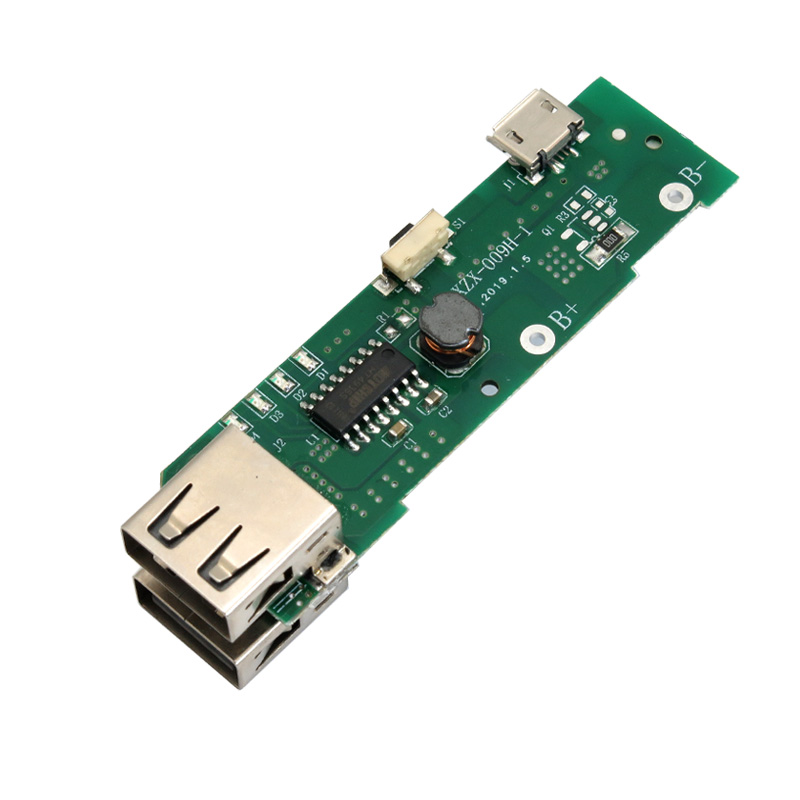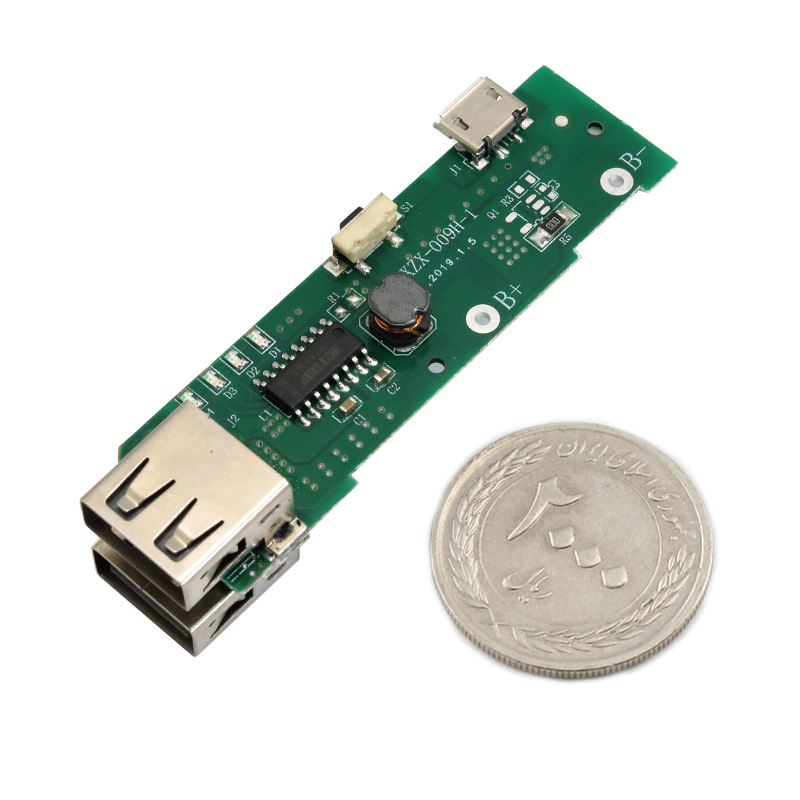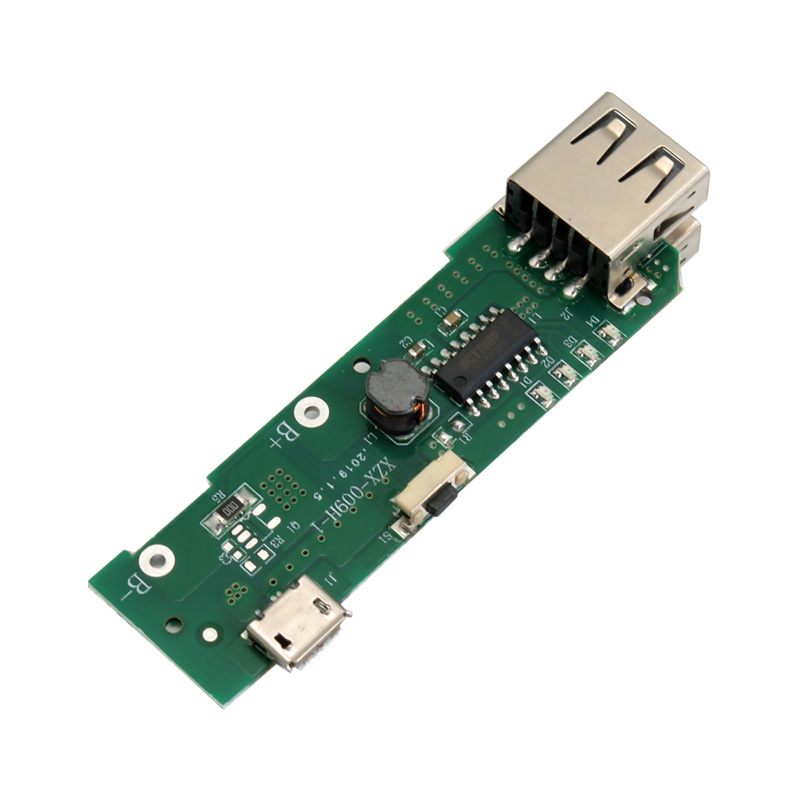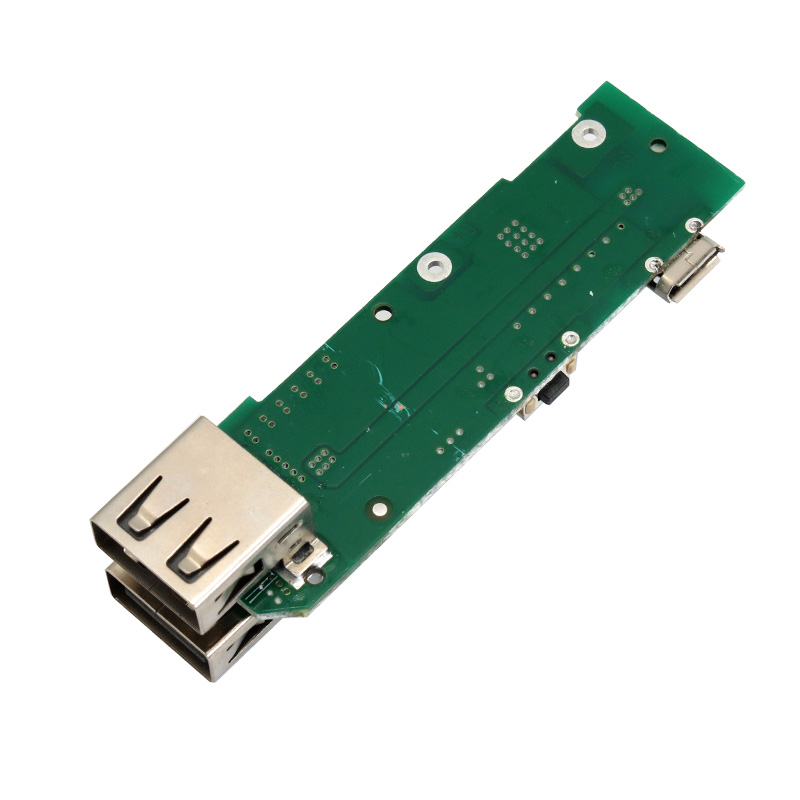4 از 5.0 با 5 رای
ماژول شارژر / دشارژر باتری لیتیومی دارای دو خروجی 5V 1A USB مناسب برای ساخت پاور بانک
ماژول شارژر/دشارژر باتری لیتیومی تنها با اتصال یک منبع ولتاژ 5 ولتی با درگاه میکرو USB به ورودی شارژر می تواند باتری متصل به خروجی را تا 5V شارژ نماید. ورودی این مدار 5 ولت و دارای دو خروجی 5 ولت با جریان متفاوت 1 و 2 آمپر می باشد و سرعت شارژ کردن تلفن را تسریع خواهد بخشید. ورودی این ماژول از طریق پورت مادگی میکرو USB و 2 خروجی با پورت مادگی USB می باشد. ولتاژ ورودی نباید از 2.8 ولت کمتر باشد زیرا که IC کنترل عمل نمی کند و نباید از 5 ولت بیشتر باشد زیرا که باعث سوختن خازن می شود.
برای ساخت پاور بانک با این ماژول، می توان از چند باتری لیتیومی استفاده کرد و پایه های مثبت را به هم و پایه های منفی را نیز بهم متصل کرد.
توصیه می شود برای لحم کاری ابتدا پایه منفی متصل شود و سپس پایه مثبت. قبل از لحیم کاری نیز تست شارژ ماژول حتما انجام شود.
Description:
The module is used for the charging of a single lithium battery or multiple lithium batteries in parallel, and the charging port can take power from the USB port.
Charging and discharging batteries is a chemical reaction, but Li-ion is claimed to be the exception. Battery scientists talk about energies flowing in and out of the battery as part of ion movement between the anode and cathode. This claim carries merits but if the scientists were totally right, then the battery would live forever. They blame capacity fade on ions getting trapped, but as with all battery systems, internal corrosion and other degenerative effects also known as parasitic reactions on the electrolyte and electrodes till play a role.
Lithium-ion operates safely within the designated operating voltages; however, the battery becomes unstable if inadvertently charged to a higher than specified voltage. Prolonged charging above 4.30V on a Li-ion designed for 4.20V/cell will plate metallic lithium on the anode. The cathode material becomes an oxidizing agent, loses stability, and produces carbon dioxide (CO2). The cell pressure rises and if the charge is allowed to continue, the current interrupt device (CID) responsible for cell safety disconnects at 1,000–1,380kPa (145–200psi).
The charge process can be intermittent, and Li-ion does not need saturation as is the case with lead-acid. This offers a major advantage for renewable energy storage such as a solar panel and wind turbine, which cannot always fully charge the battery. The absence of a trickle charge further simplifies the charger. Equalizing charger, as is required with lead-acid, is not necessary with Li-ion.
Battery Voltage:
The battery core is soldered to the booster board. The voltage must be between 2.8V and 4.2V. If the voltage is too low, the control IC will not work when it is not working. The voltage is too high and the capacitor burns out.
Soldering:
B+ is the positive electrode of the booster plate; B- is the negative electrode. Please weld the negative electrode first and then solder the positive electrode during welding; do not assemble the soldering first, test the charging and discharging, and confirm the problem without assembling the outer casing.



